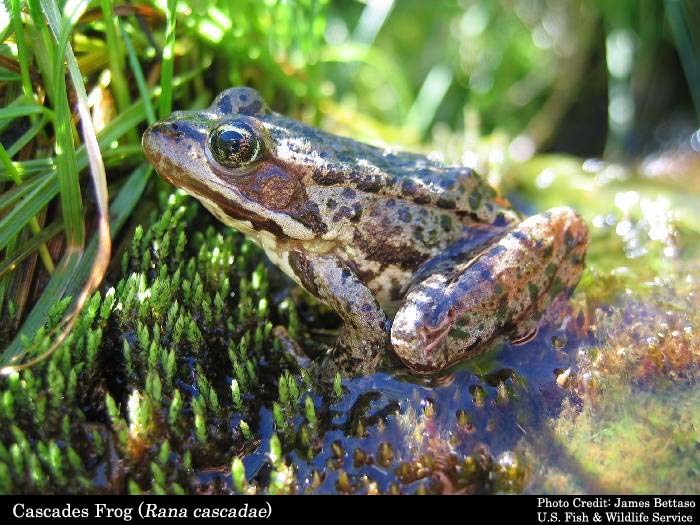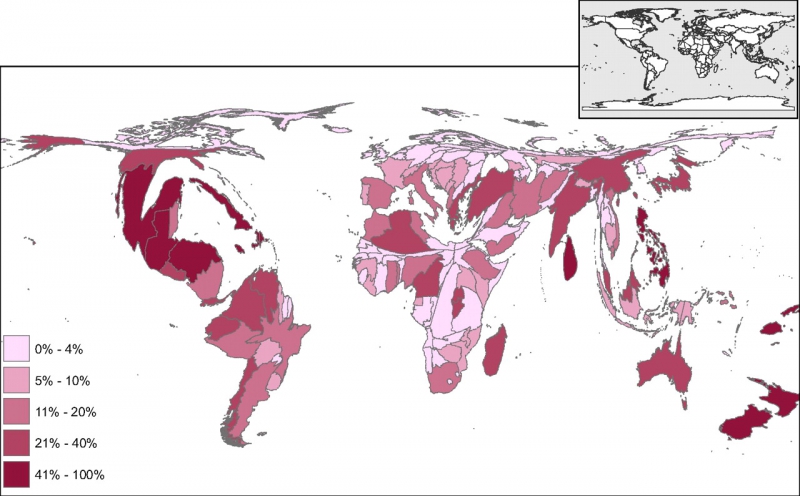Frogs, Salamanders, turtles declining rapidly in US due to climate change and habitat loss

"This new study confirms that our country's amphibians are facing an extinction crisis that demands aggressive action to tackle threats like habitat destruction and climate change," said Collette Adkins Giese, a Center for Biological Diversity biologist and attorney focusing on protection of amphibians and reptiles. "Scientists have known for a long time that frogs, toads and salamanders are in big trouble, but the declines this study documents are surprising and disturbing."
The study was lead by scientists from the U.S. Geological Survey and was published in Plos One as Trends in Amphibian Occupancy in the United States (Michael J. Adams et al). The researchers concluded:
"We found that overall occupancy by amphibians declined 3.7% annually from 2002 to 2011. Species that are Red-listed by the International Union for Conservation of Nature (IUCN) declined an average of 11.6% annually. All subsets of data examined had a declining trend including species in the IUCN Least Concern category. This analysis suggests that amphibian declines may be more widespread and severe than previously realized."
At a rate of 3.7% decline these species would disappear from half their current habitats in about 20 years. Amphibians already listed as threatened are projected to decline at 11.6 percent a year, which means these species would disappear from half their current habitat in six years.
"Threats like habitat loss, disease and climate change are pushing many frogs, toads and salamanders to the brink of extinction. That's why we're working hard to get the rarest amphibians protected under the Endangered Species Act," said Adkins Giese. "The Endangered Species Act has a track record of saving 99 percent of animals under its care. It's the best tool we have to help reverse this accelerating loss of amphibians."
Amphibians are sensitive to small environmental changes, making them signature species indicative of the health of water environments, habitats and ecosystems. Globally, more than 1,900 species of frogs, toads and salamanders, fully 30 percent of the world's amphibians, are at risk of dying out according to the International Union for Conservation of Nature's 2011 Red List.
"The loss of amphibians and reptiles is a symptom of environmental degradation, as amphibians and reptiles are valuable bio-indicators of environmental health. Amphibians have highly permeable skin and egg membranes and complex life cycles with aquatic and terrestrial life history stages that make them sensitive to environmental change, and both amphibians and reptiles are often philopatric to specific breeding, foraging, and overwintering habitats that must be connected by habitats suitable for migration" said a Center for Biological Diversity petition (PDF) filed in July 2012 to list 53 amphibians and reptiles in the United States under the Endangered Species Act. The petition was supported by a letter (PDF) signed by over 200 distinguished scientists.
As David Wake and Vance Vredenburg announced in their 2008 PNAS paper, the "general message from amphibians is that we may have little time to stave off a potential mass extinction." Indeed, the decline in amphibians is the forerunner to the 6th mass biodiversity extinction. Wake and Vredenburg conclude in their study - Are we in the midst of the sixth mass extinction? A view from the world of amphibians:
- "Multiple factors acting synergistically are contributing to the loss of amphibians. But we can be sure that behind all of these activities is one weedy species, Homo sapiens, which has unwittingly achieved the ability to directly affect its own fate and that of most of the other species on this planet. It is an intelligent species that potentially has the capability of exercising necessary controls on the direction, speed, and intensity of factors related to the extinction crisis. Education and changes of political direction take time that we do not have, and political leadership to date has been ineffective largely because of so many competing, short-term demands. A primary message from the amphibians, other organisms, and environments, such as the oceans, is that little time remains to stave off mass extinctions, if it is possible at all."
Read more from the Center for Biological Diversity on the Amphibian and reptile Extinction crisis.
Sources:
- Center for Biological Diversity Media Release, 23 May 2013 - New Study: Frog, Toad Populations Declining at Alarming Rate
- Adams MJ, Miller DAW, Muths E, Corn PS, Grant EHC, et al. (2013) Trends in Amphibian Occupancy in the United States (Full Article). PLoS ONE 8(5): e64347. doi:10.1371/journal.pone.0064347
- David Wake and Vance Vredenburg, PNAS (2008) - Are we in the midst of the sixth mass extinction? A view from the world of amphibians
- Lead image provided by Center for Biological Diversity - Cascades Frog, Rana cascadae, James Bettaso, USFWS.
Get Involved
If you'd like to help with maintaining or developing the website, contact us.
Publish
Publish your stories and upcoming events on Indybay.



